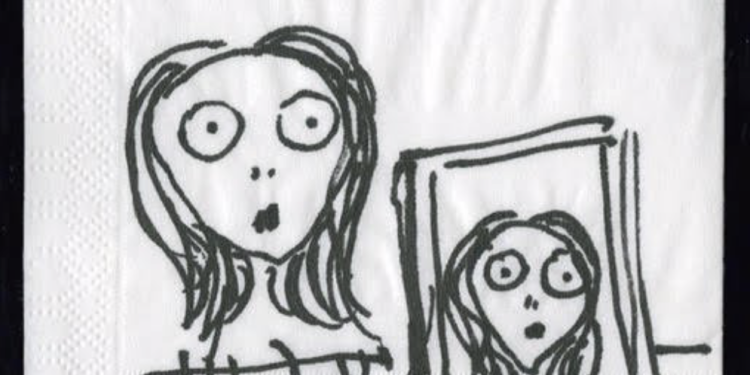Tim Burton’s illustrations and sketches reveal the essence of a visual storyteller with a profoundly unique vision. His art feels both whimsical and haunting, expressing a deep love for the grotesque and macabre as well as a childlike wonder. Over his four-decade career, Burton’s drawings have become iconic, embodying his fascination with the unusual and emotionally charged. Whether through exaggerated features, spindly limbs, or wide-eyed expressions, Burton’s characters are instantly recognizable and reflect his signature style. His sketches are rough and unapologetic, reinforcing the raw nature of his storytelling approach.
Burton’s journey as an artist and filmmaker was marked early by a keen interest in surrealist art and gothic storytelling. His earliest inspirations included artists like Edward Gorey and Charles Addams, whose work exemplified dark humor and eccentricity. These influences are evident in Burton’s sketch work, where exaggerated perspectives and odd proportions evoke an unsettling but compelling charm. His hand-drawn concepts were initially private, just rough ideas from his imagination, but over time, they have become essential to his artistic process. From The Nightmare Before Christmas to Corpse Bride, his films often begin as pencil and ink sketches, detailing every nuance of character and setting before they are translated to the big screen.
In 2009, Burton’s work was the subject of a major retrospective exhibition at the Museum of Modern Art in New York, which traveled internationally and introduced his drawings to a broader audience. The accompanying book, The Art of Tim Burton, captures the creative progression in his career, showing not just completed works but also raw concepts and unfinished pieces. It serves as a comprehensive catalog of Burton’s vision, with over 400 pages of sketches and storyboards that lay bare the intricacies of his mind. Many of his images are accompanied by notes and annotations, giving insight into the symbolism and emotional intent behind his surrealist worlds.
Burton’s visual language combines innocence with darkness, often depicting creatures and figures that embody both human vulnerability and supernatural mystique. His sketches, particularly in books like The Melancholy Death of Oyster Boy & Other Stories, explore complex themes like loneliness, alienation, and otherness, that recur in his films. Through simple lines and muted colors, he achieves a depth that many artists struggle to convey. Burton’s characters, from the melancholic Victor in Corpse Bride to the eerie and endearing Jack Skellington in The Nightmare Before Christmas, are emotional portraits of isolation and resilience. His art resonates with viewers because it taps into universal feelings of being misunderstood and longing for connection.
A significant part of Burton’s appeal lies in his ability to tap into fantasy without shying away from the darker aspects of life. His book, The Napkin Art of Tim Burton, is a more intimate exploration of his process, featuring sketches created spontaneously, often on napkins or scraps of paper. These drawings demonstrate his willingness to embrace imperfection and make use of any available canvas to channel his creativity.
His drawings are a reflection of his creative process, showing the artist’s hand and mind at work in creating worlds that are as unsettling as they are captivating. They are visual preludes to the narratives he constructs in cinema, encapsulating the atmosphere and emotion that has made his work beloved worldwide. Burton’s art invites viewers to embrace the beauty in darkness and imperfection, celebrating the strange and unusual while remaining universally relatable.
By exploring Burton’s drawings, one gains a richer appreciation for his visual storytelling and the emotional depth behind his stylized worlds. Through his art books and sketches, Burton’s creations live beyond the screen, allowing his fans and aspiring artists to experience his worlds more intimately. For those who connect with his work, these books are more than collections, they are a journey into the heart of Tim Burton’s artistic legacy.

